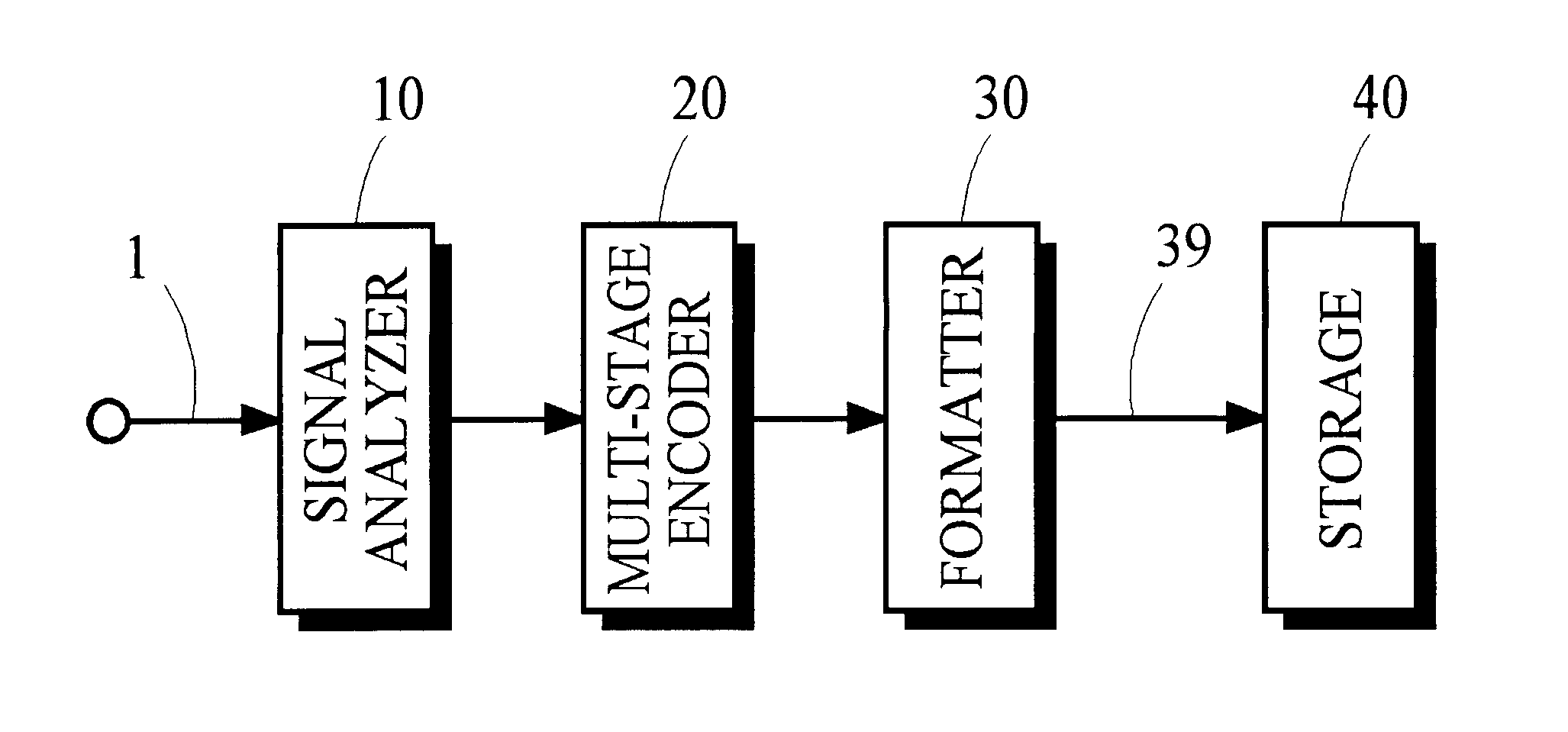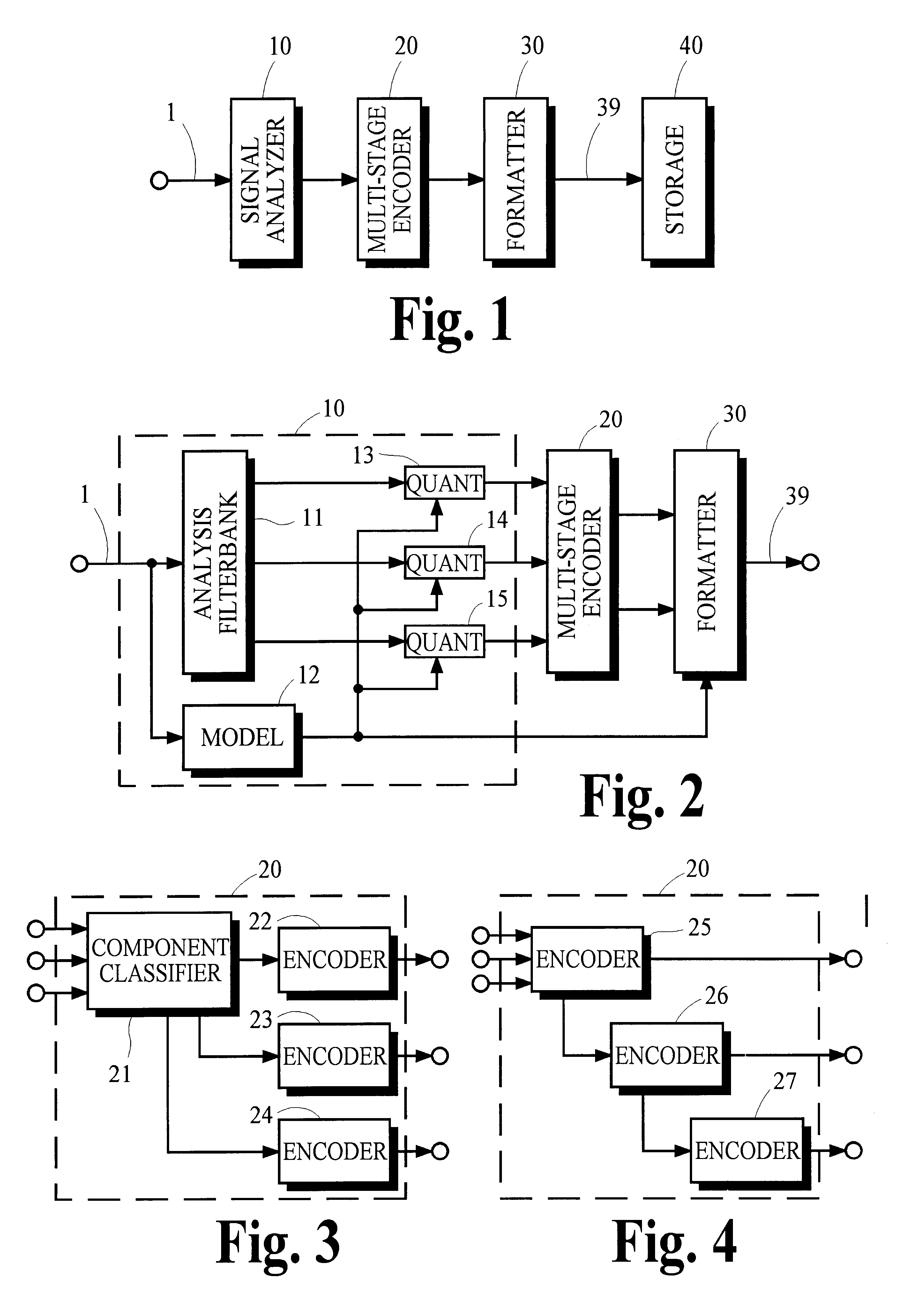Multi-stage encoding of signal components that are classified according to component value
a signal and component value technology, applied in the field of multi-stage encoding of signal components, can solve the problems of reducing information capacity requirements in a manner which does not ensure, preventing, and reducing information capacity requirements in a manner that does not guarantee, and achieves high computational complexity and lossless compression. high
- Summary
- Abstract
- Description
- Claims
- Application Information
AI Technical Summary
Benefits of technology
Problems solved by technology
Method used
Image
Examples
Embodiment Construction
A. Encoding Apparatus
FIG. 1 is a block diagram that illustrates major components in an apparatus that encodes a signal according to the present invention. Signal path 1 receives an input signal that conveys information intended for human perception, such as aural or visual information, for example. Signal analyzer 10 processes the input signal to generate signal components that represent the input signal, and multi-stage encoder 20 encodes and compresses these signal components. Formatter 30 assembles the compressed signal components into an encoded signal having a form that is suitable for transmission or storage, and passes this signal along path 39.
For example, formatter 30 may multiplex the compressed signal component into a bit stream and assemble into the bit stream error correction codes and / or frame synchronization patterns for transmission or identifying information for retrieval from storage. The encoded signal may be transmitted using baseband or modulated communication p...
PUM
 Login to View More
Login to View More Abstract
Description
Claims
Application Information
 Login to View More
Login to View More - R&D
- Intellectual Property
- Life Sciences
- Materials
- Tech Scout
- Unparalleled Data Quality
- Higher Quality Content
- 60% Fewer Hallucinations
Browse by: Latest US Patents, China's latest patents, Technical Efficacy Thesaurus, Application Domain, Technology Topic, Popular Technical Reports.
© 2025 PatSnap. All rights reserved.Legal|Privacy policy|Modern Slavery Act Transparency Statement|Sitemap|About US| Contact US: help@patsnap.com



